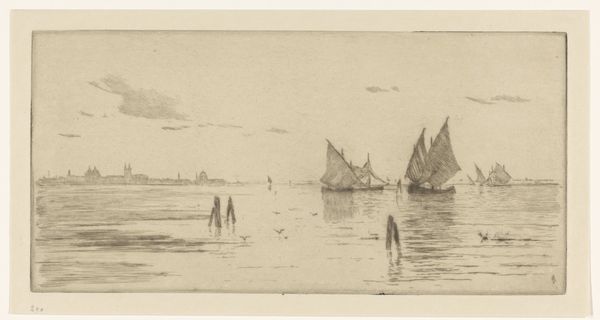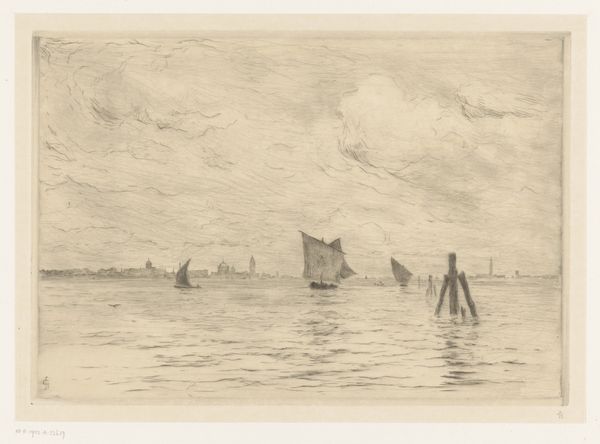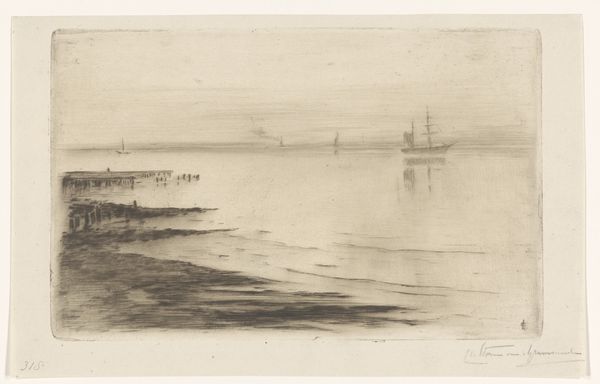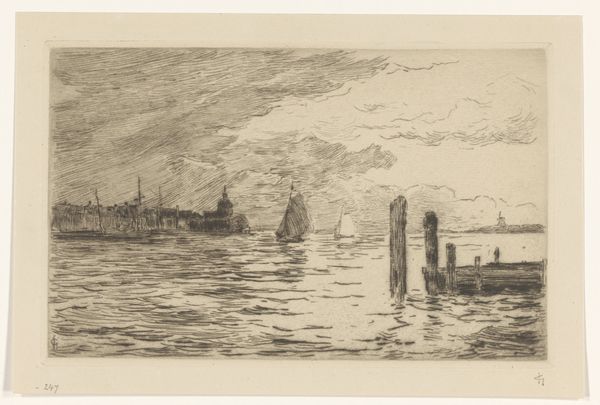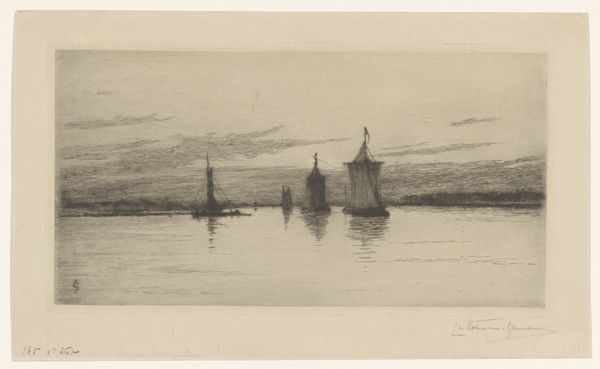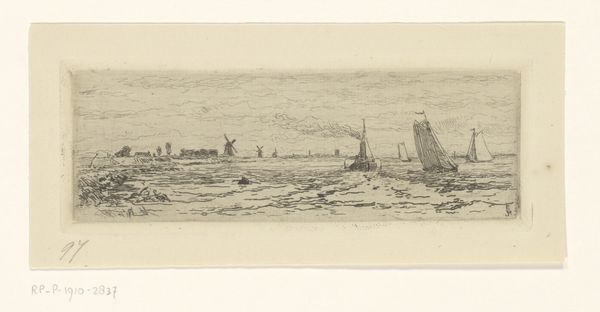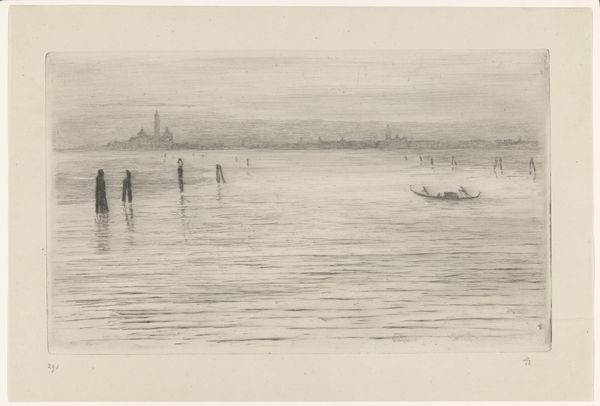
Dimensions: height 299 mm, width 501 mm
Copyright: Rijks Museum: Open Domain
Editor: Here we have "Gondel en zeilboten op het water," or "Gondola and Sailboats on the Water," an etching and graphite drawing by Carel Nicolaas Storm van 's-Gravesande, created sometime between 1851 and 1924. I'm immediately drawn to the misty, almost dreamlike quality. It really evokes a sense of serenity, wouldn’t you agree? How would you interpret this work in relation to the artistic and social currents of its time? Curator: That dreamlike quality you're sensing likely comes from the Venetian influence and the popularity of landscape imagery in prints during the late 19th century. Venetian painting often evoked these types of aesthetic ideals. Etchings became more accessible due to industrial advances in printing technology, which broadened art consumption among the middle class, giving artists a broader audience. Have you noticed the contrast between the detailed foreground and the hazier background? Editor: I do see that. The gondola feels very present, while the buildings in the background seem to fade into the horizon. Why the focus on Venice? Curator: Venice was a popular subject, often romanticized in art and literature as a city of beauty and history. Representing it allowed artists to tap into a sense of nostalgia and escape. It's also fascinating to consider the public role of prints at this time; they helped shape perceptions of different places. Prints democratized access to imagery; however, do you consider that their meaning might vary widely depending on the audience? Editor: Absolutely. Someone who had never been to Venice might have a completely different understanding of this image than someone who had. So, this seemingly peaceful scene is actually reflecting complex social dynamics of art production and distribution? Curator: Precisely! By analyzing these forces, we understand that images don’t merely reflect reality but actively participate in its construction. What do you take away from our discussion? Editor: I've never thought about the impact of printing technologies, or art distribution on popular subject matters, and how accessibility influences audience perspectives. Thanks for this fresh way of looking at art!
Comments
No comments
Be the first to comment and join the conversation on the ultimate creative platform.

